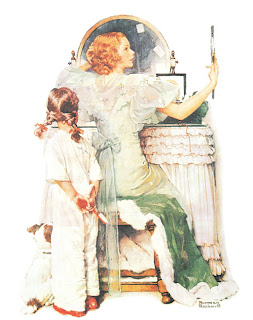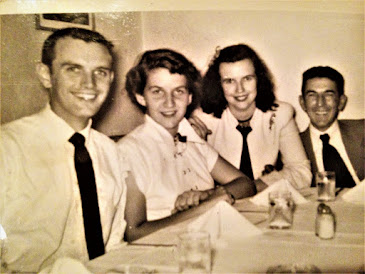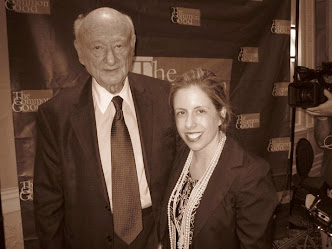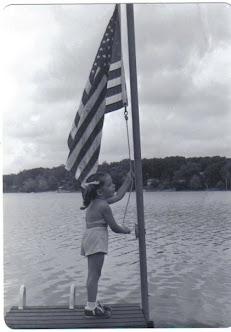READ THIS: Norman Rockwell: 332 Magazine Covers By Christopher Finch Our Coverage Sponsored by W.R. Case and Sons Cutlery Company
W.R. Case and Sons Cutlery Company
For more than a century, W.R. Case & Sons Cutlery Company has been hand-crafting premium knives exclusively in the United States. Case's distinction underscores its well-earned place as a genuine piece of Americana and the country's most popular collectable brand. The company manufactures pocketknives, sporting/hunting knives and collectables which are sold largely through an authorized dealer network made up of hardware and home improvement retailers, specialty cutlery shops, fashion and accessory shops, catalog retailers, and others. W.R. Case & Sons Cutlery Company has been based in Bradford, PA since 1905 and has been part of Zippo Manufacturing Company since 1993. For more information, visit www.wrcase.com
The Rockwell phenomenon began in 1910-the same year Mark
Twain died-and the world was blessed with a talent able to convey so much in a
picture -all of which in total graced several hundred magazine covers. We are pleased to kick off our coverage of
Abbeville with such an outstanding work of Americana and this collection is an absolute must
for anyone that considers themselves truly American because he portrayed
Americans the way they see themselves.
His celebration of finding joy and happiness in every day cuts across
class lines and is a uniting force among those that appreciate him, and now we
believe he is more relevant than ever before and as America faces such polarization, it
is time for more Rockwell. His work is
truly timeless: see page 59 with the Republicans and Democrats with their backs
to one another. Our only regret is that
we will never be able to interview him (b. 1894- d. 1978).
His work is immediately recognizable with trademark hands
and faces of his characters: Colliers, Country Gentlemen, Literary Digest and
The Saturday Evening Post all carried his paintings and they were formed in the
Victorian era – he was born on the Upper West side of Manhattan and had a late Victorian
upbringing. Over his fifty year career
he was always true to his own values but painted according to the literal time
period. Rockwell believed in the
fundamental decency of the great majority of his fellow human beings which was
most deep-seated of all his values.
Rockwell also embraces the Pioneer spirit and the American dream, most
prominently in autos and planes.
And, he even celebrates Manhattan – if you can remember the 1913 show
at the Park Avenue Armory! You’ll see
the University Club on page 334. Also, our coverage of Peachy at the Smithsonian was inaugurated with this great artist:
In this great work, the first 14 pages tell his story and
then the covers follow, each awarded a full page. At the end of the book there is an index of
each in a thumbnail sketch with a bit of history behind it. The progression over the decades is amazing
and there was less vivid color earlier and more primary on because of the
limitations of the printing press.
However, his genius transcended such limitations and of the covers,
there is great diversity of subject and each individual will come away with
favorites. By the 1940’s, Rockwell
achieved greater clarity with more distinct features and color and we feel he
uses more of the entire canvas as well. We
like the placement of the covers as they are generally in chronological order,
but not exactly, and those that face each other make sense. The covers that capture a sense of fun we
adore the most. Rockwell does a lot with
the seasons!
Among our favorites are:
*Gramps at the plate 1916 page 28
*Redhead loves Hattie 1916 page 29
*Shall we Dance 1917 page 32- Life is full of difficult
decisions
*Important Business page 48- Golf is important
*Tackled page 106 – We are ready for some football
*Sunset page 111- One of the most famous, or perhaps just
seen more often by Peachy in her life!
*So, so many good ones on Christmas
*Doctor and Doll page 139- Also very well-known
*A New Hat page 157-Ellen this one’s for you
*Springtime page 183 with the boy and the rabbits
*Rumbleseat page 184- What fun!
*The Flirts page 226- Great contrast
*New York Central Diner 1946 page 268
*Cheerleaders page 295 The expressions are genius
*The Shiner 1953 page 302 The girl with the victorious black
eye waiting outside the principal’s office
*Girl at the Mirror 1954 A look into the future…
*Triple Self Portrait 1960! Page 332 See below:
We see he also must have been an Anglophile as we spy a
Christmas cracker on page 43 in the party games, and page 86 reminded us of
Harry Potter! Rockwell’s love of leisure
and importance placed on a balanced life in where one knows what is
important. He gets more daring as time
goes on and we like how in The Bid it’s an aerial perspective. There’s an overwhelming feeling of kindness
and genuine sincerity coming from both Rockwell and his characters that will
make you feel good about life. If you
love 20th Century America ,
you love Norman Rockwell. Whom You Know
Highly Recommends this bastion of quintessential nostalgia for you collection
and we suggest you start your Christmas shopping now-this makes an excellent
gift to delight those you love most!
***
This full-sized album of Saturday Evening Post covers captures everyday events and historic moments in American history.
When he began his career as an illustrator in 1910, Norman Rockwell was not the most likely candidate for long-term celebrity; he was just one of many skillful illustrators working within the conventions of the day. But there was something tenacious about his vision, and something uncanny about his access to the wellsprings of public taste. Although technically he was an academic painter, he had the eye of a photographer and, as he became a mature artist, he used this eye to give us a picture of America that was familiar—astonishingly so—and at the same time unique.
It seemed familiar because it was everyone's dream of America; and it was unique because only Rockwell managed to bring it to life with such authority. This was, perhaps, an America that never existed, and never could, but it was an America that the public wanted to exist. And Rockwell put it together from elements that were there for everyone to see, so that he was able to give it the look of documentary reality. He held up a friendly mirror to the society he lived in, and Americans have looked into this glass and seen themselves as warm, decent, hard-working citizens of a country bountiful enough to accommodate their boundless optimism.
Rockwell best expressed this vision of America in his justly famous cover illustrations for magazines like The Saturday Evening Post. 332 of these cover paintings, from beloved classics like “Marbles Champion” to lesser-known gems like “Feeding Time,” are reproduced in stunning full color in this large-format volume, which is sure to be treasured by art lovers everywhere.
Christopher Finch was born in Guernsey, Channel Islands in 1939 and came to the United States in 1968 to join the curatorial staff of the Walker Art Center in Minneapolis. His books include the bestsellers Norman Rockwell's America, The Art of Walt Disney, and Rainbow, a biography of Judy Garland, which was turned into a motion picture for NBC television. His other books, as well as many articles for magazines on both sides of the Atlantic, have dealt with various aspects of contemporary painting and popular culture.
About Abbeville Press
Abbeville Press is an independent publisher of fine art and illustrated books, and most recently children’s books. Founded in 1977, Abbeville has long been a mainstay in the New York art book publishing world, and is currently making strides into the digital realm with e-books, iBooks, and many other e-friendly formats. Learn more about Abbeville at www.abbeville.com and connect with us on Facebook (www.facebook.com/AbbevillePress) and Twitter (@AbbevillePress).





















































































